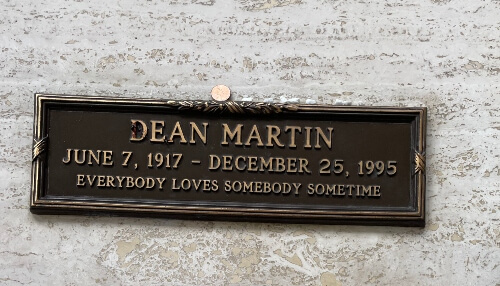I have been called many things throughout my life. But who knew I was a “taphophile”? Yes, often when people learn that I am obsessed with visiting cemeteries, they let me know there is a name for it.
Whatever it is called, the truth is: Whenever visiting a new place—or even an old one, with my renewed interest—my kids and husband know where to find me. Whenever I disappear, they’ll say, “Ah, there must be a cemetery around.”
As for why this obsession? Sure, I hate getting older, and sure, I think more about how—if not where—I want to be remembered. But I love peoples’ stories, and this curiosity about others has been increasing as I’ve gotten older. It is why I sit at bars all the time, and frankly, start a whole lot of conversations with strangers.
The specific cemetery angle may have begun while visiting my cousin in Princeton several years ago, who wanted to give us a town tour. And chose the cemetery! We thought is seemed odd, but that one is notable for its famous names (Aaron Burr, Grover Cleveland, George Kennan) and for some of the “residents’’’own words. One, for example, left only this: “I told you I was sick.” We spent hours there, and as my cousin took us to the train, he promised, “Next time I’ll take you to the coroner’s office.”
Read More: Celebrity Deaths: Why We Care So Much About the Loss of Aretha, Bowie, Princess Di
Going for the Stories

The author among the gravestones
I recently interviewed the author Neil King about his lovely new book, entitled American Ramble. That ramble was a more-than-200-mile walk he took from Washington to New York. Among his most moving anecdotes are about the graveyards—or lack of them—for former slaves. “One of the things that is so fascinating about cemeteries is that there’s this effort and desire to seize and codify things in stone,” King told me. “And to say that the beloved here buried will not be forgotten.”
It made me weep, often reading of multiple generations of one family, who fought and died in different wars.
He focuses on one cemetery called Lebanon, which came into existence after the Civil War. “It is a testament both to remembering and to a community having forgotten,” King says. “I write about this one woman who found out much later that all these eminent Blacks had been buried there, including, she discovered, her own descendants.”
Once again, it’s about stories. A friend and I were totally baffled by a rather large stone for a woman who had been a writer, and on the stone was a drawing of a NY Mets cap. We went home and kept digging deeper into her life via the Internet. We finally discovered she had been an immigrant, and when she arrived in New York, she wanted to be passionate about the most American of pastimes.
I grew up in Los Angeles, and I confess that, until this interest emerged, I had not visited the city’s huge Veterans Cemetery. It made me weep, often reading of multiple generations of one family, who fought and died in different wars. On the flip side, I recently ended up in Florida, New York: a town the size of a thimble that gave us Abe Lincoln’s Secretary of State William Seward. It was the place in which a heroic leader was born and chose to be remembered.
I just returned from a “Thomas Hardy Walking Tour in England” (don’t ask), and the story I most remember? Learning that Hardy insisted on being buried at his childhood home in Dorset. But the elders of England insisted he be part of the Poets Corner at Westminster Abby. The great compromise: His heart is buried in his yard, the rest of him in that corner.
Where the Stars Go to Rest

A favorite epitaph
It was only this past year that I made my way to the shockingly small mortuary in West Los Angeles where Marilyn Monroe’s crypt sits beside Hugh Hefner’s. (Wonder how he arranged that!) But for some reason, I was most touched by those of some of my childhood idols, including Dean Martin and Natalie Wood (“Wood-Wagner” as her marker reads). And, also, the gravesites of Kirk and Anne Douglas, who my family knew through the tennis world. There was only one other visitor, who told me he was spending the day playing music next to the stone of his idol, Roy Orbison.
There was only one other visitor, who told me he was spending the day playing music next to the stone of his idol, Roy Orbison.
I have discovered that a political and journalism pal, Bill Press, has the same obsession. I made a special trip to our nation’s capitol so he could take me to three famous cemeteries. There I said a final farewell to people I knew, like Cokie Roberts and Tim Russert. And others I admired (Gore Vidal). Bill and I keep discussing the idea of doing a book on the subject, but what can we say that’s new? Or un-creepy? Bill thought maybe we should just do writers around the world’s graveyards and even came up with a title: Better Read Than Dead.
Or perhaps we can borrow the words on a famous comedy writer’s gravestone: “Finally. A plot!”
Read More: When I Look Up, All I See is Sky”: Losing RBG and a Generation
***
Michele Willens is the co-author of Face It: What Women Really Feel When Their Looks Change and author of From Mouseketeers to Menopause.























0 Comments